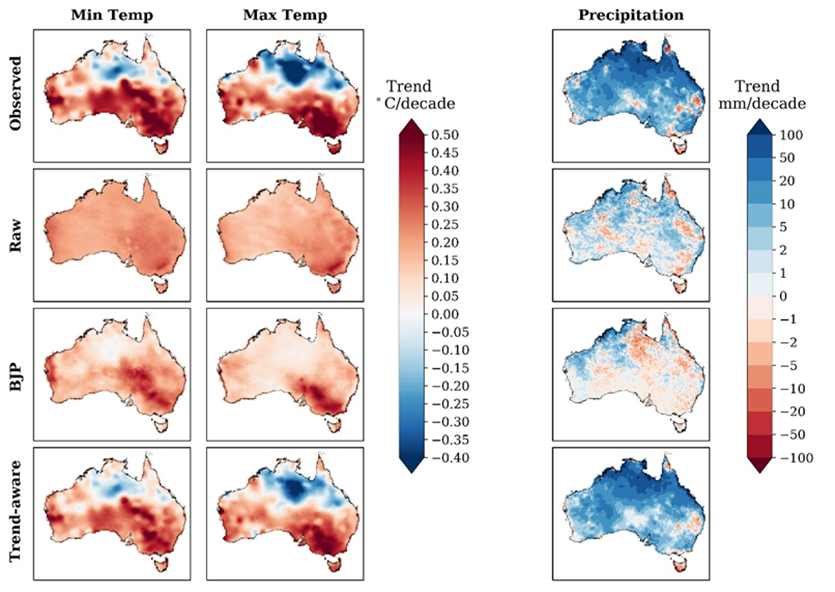Post-processing sub-seasonal to seasonal climate forecasts under climate change
First published in Water e-Journal Vol 7 No 1 2022.
DOWNLOAD THE PAPER
Summary
Land surface air temperature and precipitation have shown marked temporal trends in many parts of the world over recent decades. For managing the impacts of climate variability and change, skillful and reliable ensemble seasonal and sub-seasonal climate forecasts from global climate models (GCMs) are in high demand within climate-sensitive communities, such as water resource management, agriculture, and energy. However, GCMs are often reported to poorly reproduce observed trends in the model forecasts. This issue is also not resolved by existing statistical post-processing methods that aim to remove model biases, maximize forecast skill, and improve forecast reliability in terms of the ensemble spread. To address this gap, the overarching objective of this project is to develop and demonstrate the merit of a new, trend-aware forecast post-processing method that eliminates the trend disparity between climate forecasts and observations while making the resulting forecasts bias-free, skillful, and reliable. Building on a statistical calibration method, called the Bayesian Joint Probability (BJP) modeling approach, the trend-aware method is introduced and applied to seasonal minimum and maximum temperature and precipitation forecasts from the SEAS5 seasonal forecasting system, operated by the European Centre for Medium-Range Weather Forecasts (ECMWF), and to sub-seasonal temperature forecasts from the ECMWF extended-range forecasting system over the Australian continent. The new trend-aware forecast post-processing method is found to be effective for resolving the trend disparity issues of GCM sub-seasonal and seasonal climate forecasts (as shown in Figure 1). The calibrated ensemble forecasts are more skillful and reliable than raw ensemble forecasts. These findings demonstrate the robustness of the trend-aware method in delivering quality sub-seasonal to seasonal climate forecasts and building user confidence in employing the forecasts for decision-making in a changing climate. Further research will adapt the trend-aware method for other hydrometeorological variables.

Figure 1: Decadal trends for observations, raw, BJP, and trend-aware calibrated forecasts of Australian summer (Dec-JanFeb) minimum and maximum temperature, and precipitation with 1-month lead time over 1981-2016.
